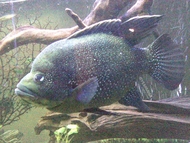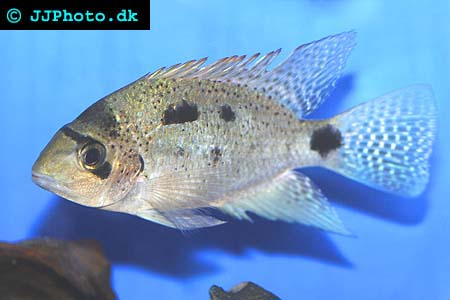- Hjem
- Forum
- Nybegynner
- Finneråte og salting
Finneråte og salting
Har oppdaget finneråte i akvariumet mitt. Har lest i sykdomsartikkelen her på forumet
Sitat:
Behandling av finneråte:
Lett finneråte kan behandles ved å tilføre 0,2 % salt (maks for alle malletyper), er det hardfør fisk, kan dette økes til 0,4 %. Hyppige vannbytter på +/- 25 % daglig har også god effekt. Stress bør selvfølgelig unngås. Dossering over 0,25% må gjøres utenom selve akvariet, da dette vil drepe filterbakteriene\ bakteriene i bunnlaget
Om dette ikke hjelper, eller om fisken er hardt rammet, bør du medisinere. Anbefaler eSHa 2000 til kurering av denne bakterien, siden denne medisinen er en av de mer effektive, uten å ødelegge filterkulturen.
Lurer her på doseringen akvariumet er på 85l altså 85*0,02 = 1,7
Det kan vel umulig stemme at jeg skal hive oppi 1,7 liter rent salt ???
Noen som har peiling på dette? takker for svar.
P.S har en misstanke om at det bare er jeg som suger i matte.
Sitat:
Behandling av finneråte:
Lett finneråte kan behandles ved å tilføre 0,2 % salt (maks for alle malletyper), er det hardfør fisk, kan dette økes til 0,4 %. Hyppige vannbytter på +/- 25 % daglig har også god effekt. Stress bør selvfølgelig unngås. Dossering over 0,25% må gjøres utenom selve akvariet, da dette vil drepe filterbakteriene\ bakteriene i bunnlaget
Om dette ikke hjelper, eller om fisken er hardt rammet, bør du medisinere. Anbefaler eSHa 2000 til kurering av denne bakterien, siden denne medisinen er en av de mer effektive, uten å ødelegge filterkulturen.
Lurer her på doseringen akvariumet er på 85l altså 85*0,02 = 1,7
Det kan vel umulig stemme at jeg skal hive oppi 1,7 liter rent salt ???
Noen som har peiling på dette? takker for svar.
P.S har en misstanke om at det bare er jeg som suger i matte.
Postet 12.06.09 kl 00:06
Endret: 12.06.09 kl 00:08
Postet 12.06.09 kl 09:04
Tror jeg og har fått finneråte. Kanten på finnene er ujevn og grå/sort, fiskene virker i tilleg litt slappe. Zebraciklidenes finner er helt flisete i enden, men ikke misfarget. Stemmer dette overens med dine fiskers symptomer?
Vet noen om UV-filter dreper bakteriene som forårsaker finneråte?
Ifølge regnestykket deres skal mitt 490 liters kar behandles med 0,98 kilo salt?
Høres jo vanvittig mye ut.
Vet noen om UV-filter dreper bakteriene som forårsaker finneråte?
Ifølge regnestykket deres skal mitt 490 liters kar behandles med 0,98 kilo salt?
Høres jo vanvittig mye ut.
Postet 13.06.09 kl 14:08
Kjekt å vite
Ser ut til at mitt akvariesalt bare inneholder sodiumklorid og ikke kaliumklorid. Begge er vissnok nødvendig for å drepe aeromonas, tror jeg bruker esha 2000 i tilegg.
Ser foresten ut til at Aeromonas i teorien kan gjøre mennesker syke så ikke drikk akvarievannet om du har bakterien
Occurrence of exposure
Aeromonas hydrophila infections occur most during environmental changes, stressors, change in the temperature, in contaminated environments, and when an organism is already infected with a virus or another bacterium. It can also be ingested through food products that have already been infected with the bacterium, such as seafood, meats, and even certain vegetables such as sprouts.
[edit] Fish and amphibians
Aeromonas hydrophila is associated with diseases mainly found in fish and amphibians, because these organisms live in aquatic environments. It is linked to a disease found in frogs called red leg, which causes internal, sometimes fatal hemorrhaging. When infected with Aeromonas hydrophila, fish develop ulcers, tail rot, fin rot, and hemorrhagic septicaemia. Hemorrhagic septicaemia causes lesions that lead to scale shedding, hemorrhages in the gills and anal area, ulcers, exophthalmia, and abdominal swelling.
[edit] Human diseases
Aeromonas hydrophila is not as pathogenic to humans as it is to fish and amphibians. One of the diseases it can cause in humans is gastroenteritis. This disease can affect anyone, but it occurs most in young children and people who have compromised immune systems or growth problems. This bacterium is linked to two types of gastroenteritis. The first type is a disease similar to cholera, which causes rice-water diarrhea. The other type of disease is dysenteric gastroenteritis, which causes loose stools filled with blood and mucus. Dysenteric gastroenteritis is the most severe out of the two types, and can last for multiple weeks. Aeromonas hydrophila is also associated with cellulitis, an infection that causes inflammation in the skin tissue. It also causes diseases such as myonecrosis and eczema in people with compromised immune systems.
[edit] Outbreaks
Though Aeromonas hydrophila can cause serious diseases, there have never been serious outbreaks. There was an outbreak inside the intestinal tract of lizards in Puerto Rico. There were 116 different strains found in the lizards. On May 1, 1988 there was a small Aeromonas hydrophila outbreak in California. There were 225 isolates and 219 patients admitted in the hospital because of the bacterium. Confidential Morbidity Report cards were used to report the cases of the bacterium to the local health departments. Investigations were conducted, and reports were sent to the California department of health services for diagnosis and methods in treatment.
[edit] Treatments
Though Aeromonas hydrophila is very resistant to the common methods used to kill most bacteria, it can be eliminated. It can be killed using one percent sodium hypochlorite solution and two percent calcium hypochlorite solution.
Chemotherapeutic agents such as chloramphenicol, florenicol, tetracycline, sulfonamide, nitrofuran derivatives, and pyrodinecarboxylic acids are used to eliminate and control the infection of Aeromonas hydrophila. Terramycin is placed in fish food during hatchery operations as another chemotherapeutic agent in preventing Aeromonas hydrophila.
[edit] Preventing infection
It is ill-advised to transfer fish from hatchery to hatchery without any sanitation. Hatchery workers should clean the fish, and check for bacterial infection between each operation. To avoid contamination oxygen levels in fish should be maintained, and fish should always be handled gently, to avoid injury. Prophylactic treatments can also be used when trying to prevent Aermonas hydrophila. These treatments include disinfectants and Acriflavin.
Postet 13.06.09 kl 17:08
Postet 13.06.09 kl 17:09
Endret: 13.06.09 kl 17:11
Postet 13.06.09 kl 17:11
Postet 13.06.09 kl 21:48
Molly&GuppyHvem er det som drikker fra akvariumet da?
Trodde alle ekte akvarister lagde lørdagsdrinken av vodka med akvarievann.
P.S
Fisken er no nesten helt fin igjen etter to dager i saltlake. Så bedring på henne bare etter noen timer. Så fra nå av blir det salting i alle akvariumene, melder meg gjerne inn i den klubben.
Postet 14.06.09 kl 08:12
Endret: 14.06.09 kl 08:14
Postet 15.06.09 kl 16:32
Håper ikke jeg stjeler tråden din her, men håoer noen kan hjelpe.. jeg tror kanskje jeg har finneråte på to av fiskene. Kan saltet skade noe? Gode bakterier , filter eller planter? Skal jeg ta ut de to som er syke og behandle bare de, eller kan jeg ta ut de som ser friske it i et annet kar? Eller smitter de fisken som er i det andre karet da?
Postet 28.03.13 kl 23:16




